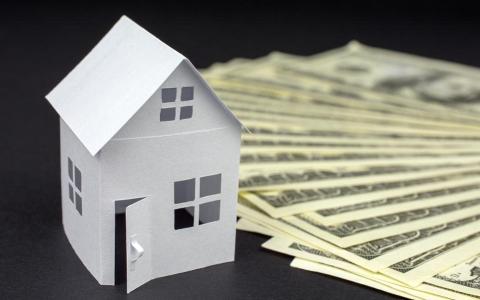
When talking about real estate, you have likely heard the widely used phrase “location, location, location.” What realtors mean by this is that identical homes may have very different prices depending upon location. What this often means to home buyers is that they may have to pay more to live close to work or to be in the best school district. The right location may also mean the most potential for capital appreciation, an important consideration when the home is a long-term investment. In retirement, however, many of these considerations move to the background. In fact, retirees need a new mantra when making housing decisions, “cash flow, cash flow, cash flow.” Cash flow is king in retirement. Without it, you cannot meet your retirement income needs.
Before focusing on “cash flow,” the place to begin is with what people want since that drives spending needs. The reality is that most people want to age in place. A 2017 research article published in the Journal of Financial Planning, “The Effect of Low Reverse Mortgage Literacy on Usage of Home Equity in Retirement Income Plans,” showed that the vast majority of homeowners, roughly 83 percent, wanted to age in place in their current home for as long as possible. People feel a deep emotional attachment to their homes. This emotional aspect of homeownership cannot be ignored in retirement, but it also cannot be the only consideration. In many cases, the current home is not financially or functionally appropriate for the homeowner to live in throughout retirement.
In addition to wanting to age in place, homeowners do not want to “backtrack” in retirement from owning to renting. Only 5% of the survey respondents in the aforementioned study indicated a desire to rent if they were to move out of their home in retirement. Once an individual owns a home, most want to keep owning a home. Home ownership evokes a real sense of achievement and is still viewed as part of the “American Dream.” Even in today’s increasingly partisan world, homeownership remains a shared value across party lines. In a 2017 Zillow Housing Aspiration Report, roughly two-thirds of both Republicans and Democrats reported that owning a home is essential to living the American Dream.
Since most homeowners want to age in place and not rent, let’s take a look at why “cash flow, cash flow, cash flow” should replace “location, location, location” in choosing retirement housing. According to Chris Mayer, a Columbia University Real Estate Professor and the CEO of Longbridge Financial, “There is a lot of opportunity for older homeowners to be more strategic about their living situation and let home equity help cover their expenses in retirement. Cash flow can be improved in three ways: moving to free up cash flow, restricting debt obligations, or supplementing retirement income by tapping into home equity through a reverse mortgage.
The first housing strategy to improve cash flow is to move in order to free up equity or to reduce costs. Downsizing is probably the most common housing decision made in order to free up cash as many retirees are living in homes that are too large, too expensive, and not fit for senior living. Downsizing to a more economical home that allows for aging in place can be a viable strategy because it helps reduce ongoing costs and, at the same time, frees up home equity to support a more comfortable standard of living in retirement.
Closely related to downsizing is relocating. Relocating might mean moving to a more expensive house but in a less expensive area, perhaps even to a new state or country. When selling a house and relocating to a new area, it is important to look at the total cost associated with moving, including changes in taxes. Some states, like Pennsylvania, provide good tax incentives for seniors to relocate by not taxing pension and Social Security income, which can increase cash flow. However, a relocation decision needs to be carefully examined because it is almost impossible to reverse. If you sell your home and move to a new state, it is unlikely you will be able to repurchase your old home and move back if you don’t like the new area.
The second retiree housing cash flow factor is debt management. While freeing up cash flow and equity can be achieved through downsizing and relocating, taking strategic measures to deal with an existing mortgage can also improve a retiree’s financial situation. Every year an increasing proportion of retirees are entering retirement with a mortgage; the required mortgage payments throughout retirement put a serious strain on cash flow. These mortgage payments can cause a substantial financial burden and risk for the retiree. To address this problem, some people try to make extra payments and prepay the mortgage several years before or early in retirement. Most research shows, however, that this is not the best way to handle a mortgage and actually can be worse for a retiree than just continuing to make normal mortgage payments throughout retirement. One option is to lower monthly payments by refinancing at a lower interest rate. Another option is to embrace the mortgage and spread out the payments over a longer period of time. While getting a longer mortgage for a retiree might seem counterintuitive, it can actually improve cash flow by lowering monthly payments and, in many cases, increase the longevity of the homeowner’s retirement portfolio.



